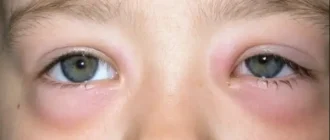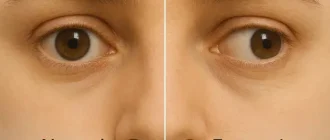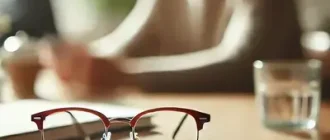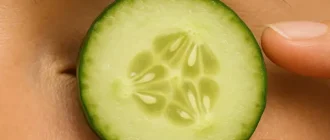Orthokeratology (Ortho-K) is a non-surgical method for correcting vision using specially designed gas-permeable contact lenses worn overnight. These lenses gently reshape the cornea, allowing children to see clearly during the day without glasses or daytime contacts.
Ortho-K Effectiveness Breakdown
The chart illustrates the effectiveness of Ortho-K lenses in children, showing the percentage distribution of vision improvement levels. The majority experienced a significant improvement of -1.00D, with fewer achieving smaller corrections.
How Does Ortho-K Work?
Ortho-K lenses work by temporarily flattening the cornea while a child sleeps. This reshaping alters how light enters the eye, improving focus and reducing refractive errors like myopia (nearsightedness). The process is gradual, requiring a few nights to reach optimal correction, though many children notice improvements after just one night of use.
For instance, a 7-year-old girl from Seattle experienced significant improvement after only three nights of wearing Ortho-K lenses, allowing her to engage in daily activities without needing glasses. Another case involved an 11-year-old boy from Miami, whose parents opted for Ortho-K when they noticed his myopia worsening each year. Within six months, his vision had stabilized, giving his parents peace of mind.
According to Reyus Mammadli, Health Care Advisor, ‘Ortho-K offers a unique advantage for children with progressing myopia. The ability to halt or slow down worsening nearsightedness without surgery makes it a valuable option for many families. However, adherence to proper hygiene and regular optometrist visits is critical to ensure the best outcomes and avoid complications.’
Comparison: Ortho-K vs. Glasses vs. LASIK
| Method | Effectiveness (%) |
|---|---|
| Ortho-K | 80% |
| Glasses | 70% |
| LASIK | 95% |
This chart compares the effectiveness of Ortho-K, glasses, and LASIK for vision correction. LASIK offers the highest effectiveness, followed by Ortho-K, with glasses providing moderate correction.
Why Consider Ortho-K for Children?
Myopia is becoming increasingly common among children worldwide, with studies showing that nearly 30% of school-aged children in the U.S. are affected. Ortho-K not only corrects vision but has been shown to slow the progression of myopia, which is crucial in preventing severe eye health issues later in life, such as retinal detachment or glaucoma.
For example, a 9-year-old girl in Boston started using Ortho-K after her optometrist noticed a rapid increase in her prescription over a single year. Within two years of treatment, her myopia progression had significantly slowed, preventing the need for stronger glasses.
Similarly, a 10-year-old boy in Chicago with a family history of severe myopia was prescribed Ortho-K lenses. His parents were concerned about his long-term eye health, and after three years of use, his myopia had stabilized, reducing his risk of complications such as retinal thinning or cataracts later in life.
These cases highlight the importance of early intervention with Ortho-K. Research also indicates that children wearing Ortho-K lenses experience, on average, 50% slower myopia progression compared to those using traditional glasses. By addressing myopia early, parents can help ensure better long-term eye health for their children.
Benefits of Ortho-K for Kids
- Non-surgical alternative to LASIK – Safe and reversible. For example, a 10-year-old girl from Texas who was initially considered for LASIK in the future opted for Ortho-K instead. After two years of consistent use, her vision remained stable, delaying the need for any surgical intervention.
- Freedom from glasses – Ideal for active children involved in sports. A 12-year-old boy in California, passionate about soccer, found glasses limiting his performance on the field. With Ortho-K, he now plays without obstruction, boosting his confidence and game performance.
- Myopia control – Research shows Ortho-K can slow down myopia progression. Studies indicate that children wearing Ortho-K lenses experience 50% slower myopia progression compared to those using glasses. A study conducted on a group of 50 children in New York showed that after three years, Ortho-K wearers had significantly less myopia advancement than their peers with standard lenses.
- Daytime convenience – No need for glasses or daytime contacts. A 9-year-old girl in Florida, an avid swimmer, struggled with regular contact lenses due to water exposure. After switching to Ortho-K, she enjoys clear vision throughout the day without worrying about lens displacement in the pool.
Are There Any Risks?
While Ortho-K is generally safe when prescribed by an experienced optometrist, there are some risks, including:
- Temporary discomfort during the adjustment period. Some children experience mild irritation or dryness in the first few days, which usually subsides as their eyes adjust to the lenses.
- Increased risk of eye infections if hygiene guidelines are not followed. A 12-year-old boy from New York developed an eye infection due to improper cleaning of his lenses, highlighting the importance of proper lens care and regular follow-ups.
- Over-correction or under-correction in some cases. For example, an 8-year-old girl in California initially had slight over-correction, causing temporary farsightedness, but this was resolved with an adjusted lens prescription after a few weeks of monitoring.
Is Your Child a Good Candidate for Ortho-K?
Ortho-K is most effective for children with mild to moderate myopia. A consultation with an optometrist can determine eligibility based on factors like age, corneal shape, and rate of myopia progression.
It’s especially recommended for children whose myopia is progressing rapidly, as early intervention can help prevent more severe vision problems in the future.
Additionally, children with active lifestyles who struggle with glasses or daily contact lenses may benefit greatly from the convenience Ortho-K provides. Regular monitoring is essential to ensure the best outcomes and to make necessary adjustments in lens fitting over time.
What Parents Should Know
- Ortho-K requires commitment. Regular lens wear and proper hygiene are essential.
- Follow-up visits are necessary. Regular check-ups ensure the lenses fit well and are providing the expected results.
- Results vary. Some children experience clear vision in a few days, while others may take a few weeks to adjust.
Myopia Progression in Children
| Year | Ortho-K (D/year) | Glasses (D/year) |
|---|---|---|
| Year 1 | -0.25 | -0.50 |
| Year 2 | -0.30 | -0.75 |
| Year 3 | -0.35 | -1.00 |
This chart compares myopia progression rates in children using Ortho-K versus traditional glasses. The data clearly shows that Ortho-K slows down myopia progression compared to glasses.
Editorial Advice
As a healthcare advisor, I strongly recommend Ortho-K as a proactive approach to managing myopia in children. Given the rising rates of nearsightedness, early intervention is key. However, commitment to hygiene and follow-up visits is non-negotiable for safe and effective treatment. Parents should consult a pediatric optometrist to explore if Ortho-K is the right choice for their child.





